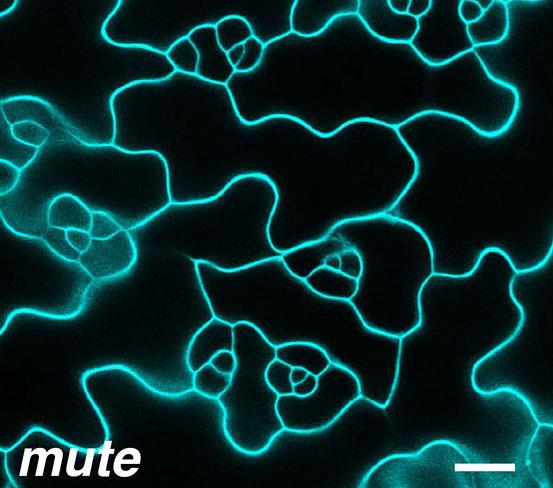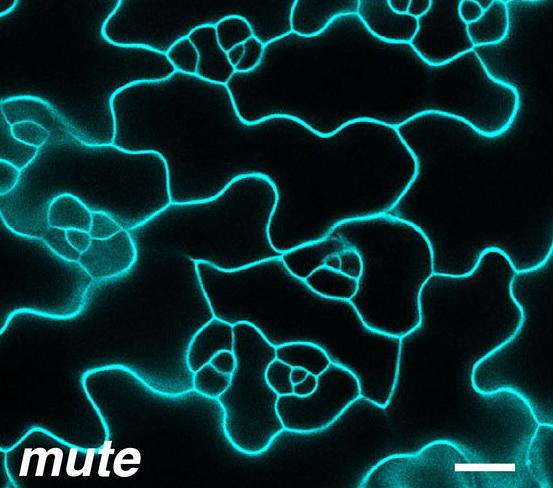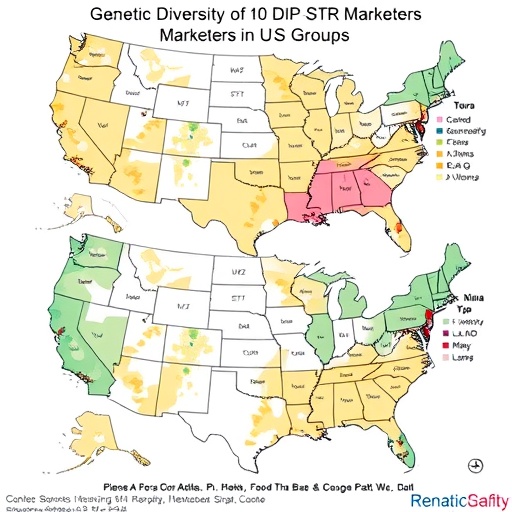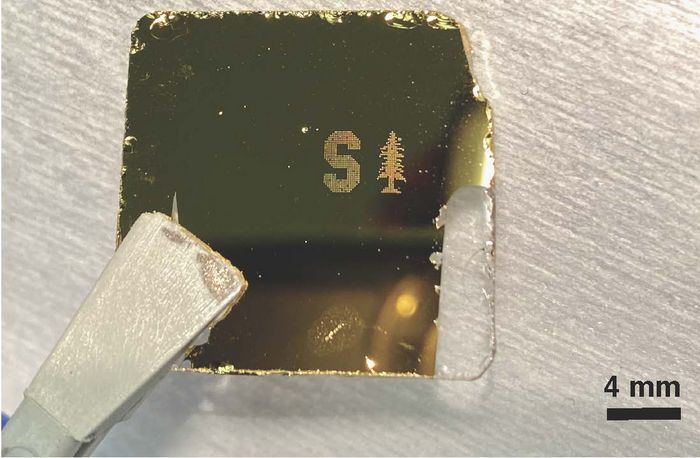
Credit: Soon-Ki Han/ Xingyun Qi
Plants know how to do a neat trick.
Through photosynthesis, they use sunlight and carbon dioxide to make food, belching out the oxygen that we breathe as a byproduct. This evolutionary innovation is so central to plant identity that nearly all land plants use the same pores — called stomata — to take in carbon dioxide and release oxygen.
Stomata are tiny, microscopic and critical for photosynthesis. Thousands of them dot on the surface of the plants. Understanding how stomata form is critical basic information toward understanding how plants grow and produce the biomass upon which we thrive.
In a paper published May 7 in the journal Developmental Cell, a University of Washington-led team describes the delicate cellular symphony that produces tiny, functional stomata. The scientists discovered that a gene in plants known as MUTE orchestrates stomatal development. MUTE directs the activity of other genes that tell cells when to divide and not to divide — much like how a conductor tells musicians when to play and when to stay silent.
"The MUTE gene acts as a master regulator of stomatal development," said senior author Keiko Torii, a UW professor of biology and investigator at the Howard Hughes Medical Institute. "MUTE exerts precision control over the proper formation of stomata by initiating a single round of cell division — just one — in the precursor cell that stomata develop from."
Stomata resemble doughnuts — a circular pore with a hole in the middle for gas to enter or leave the plant. The pore consists of two cells — each known as a guard cell. They can swell or shrink to open or close the pore, which is critical for regulating gas exchange for photosynthesis, as well as moisture levels in tissues.
"If plants cannot make stomata, they are not viable — they cannot 'breathe,'" said Torii, who also is a professor at Nagoya University in Japan.
Torii and her team investigated which genes governed stomata formation in Arabidopsis thaliana, a small weed that is one of the most widely studied plants on the planet. Past research by Torii's team and other researchers had indicated that, in Arabidopsis, MUTE plays a central role in the formation of stomata. The MUTE gene encodes instructions for a cellular protein that can control the "on" or "off" state of other plant genes.
The researchers created a strain of Arabidopsis that can artificially produce a lot of the MUTE protein, so they could easily identify which genes the MUTE protein turned on or off. They discovered that many of the activated genes control cell division — a process that is critical for stomatal development.
In Arabidopsis, as in nearly all plants, stomata form from precursor cells known as guard mother cells, or GMCs. To form a working stoma — singular for stomata — a GMC divides once to yield to paired guard cells. Since their data showed that MUTE proteins switched on genes that regulated cell division, Torii and her team wondered if MUTE is the gene that activates this single round of cell division. If so, it would have to be a tightly regulated process. The genetic program would have to switch on cell division in the GMC, and then quickly switch it right back off to ensure that only a single round of division occurs.
Torii's team showed that one of the genes activated by the MUTE protein to its DNA is CYCD5;1, a gene that causes the GMC to divide. The researchers also found that MUTE proteins turn on two genes called FAMA and FOUR LIPS. This was an important discovery because, while CYCD5;1 turns on cell division of the GMC, FAMA and FOUR LIPS turn off — or repress — the cell division program.
"Our experiments showed that MUTE was turning on both activators of cell division and repressors of cell division, which seemed counterintuitive — why would it do both?" said Torii. "That made us very interested in understanding the temporal regulation of these genes in the GMC and the stomata."
Through precise experiments, they gathered data on the timing MUTE activation of these cell division activators and repressors. They incorporated this information into a mathematical model, which simulated how MUTE acts to both activate and repress cell division in the GMC. First, MUTE turns on the activator CYCD5;1 — which triggers one round of cell division. Then, FAMA and FOUR LIPS act to prevent further cell division, yielding one functional stomata consisting of two guard cells.
"Like a conductor at the podium, MUTE appears to signal its target genes — each of which has specific, and even opposite, parts to play in the ensuing piece," said Torii. "The result is a tightly coupled sequence of activation and repression that gives rise to one of the most ancient structures on land plants."
###
Co-lead authors on the paper are Soon-Ki Han, a former UW postdoctoral researcher now at Nagoya University, and UW postdoctoral researcher Xingyun Qi. Additional co-authors are Jonathan Dang, Kristen Miller and Eun Deok Kim at the UW; Kei Sugihara and Takashi Miura at Kyushu University; and Takaho Endo at the RIKEN Center for Integrative Medical Sciences. The research was funded by the National Science Foundation, the Gordon and Betty Moore Foundation and the HHMI.
For more information, contact Torii at 206-221-5701 or [email protected].
Grant numbers: MCB-0855659, GBMF-3035.
Link to full release with images: http://www.washington.edu/news/2018/05/07/stomata-the-plant-pores-that-give-us-life-arise-thanks-to-a-gene-called-mute-scientists-report/
Media Contact
James Urton
[email protected]
206-543-2580
@UW
http://www.washington.edu/news/
Original Source
http://www.washington.edu/news/2018/05/07/stomata-the-plant-pores-that-give-us-life-arise-thanks-to-a-gene-called-mute-scientists-report/ http://dx.doi.org/10.1016/j.devcel.2018.04.010






